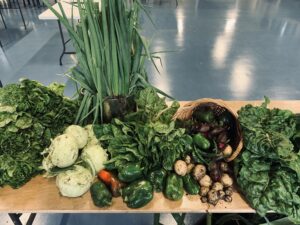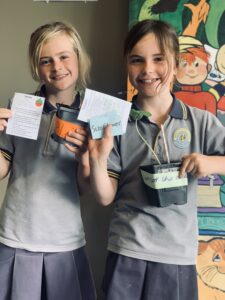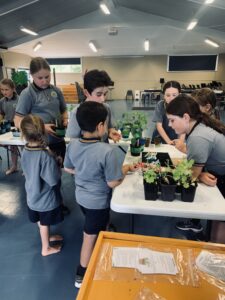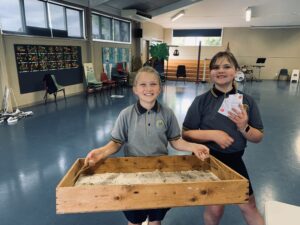“Enviroschools is an environmental action-based programme where young people are empowered to design and lead sustainability projects in their schools, neighbourhoods and country,” says Napier Central Enviroschools lead teacher, Heidi-Ann Phillips.
The school is already well on its way, having reflected at bronze in December last year and hosting a celebration of their achievements since signing onto the programme the previous year.
As an Enviroschool, there are three stages a kura or centre can work towards and reflect against: Bronze, Silver and Green-Gold. Heidi-Ann says there was a lot they had already undertaken environmentally before becoming an Enviroschool and found it a good fit for the school.
“All classes are involved in their unique way. It could look like a junior room acting as kaitiaki of our bug hotel, or a middle school classroom learning about the set up and continuation of a worm farm/compost unit.” – Heidi-Ann Phillips
During Seaweek this year the school once again checked out their stormwater drains around the grounds.
“Sally Chandler, our regional co-ordinator for Enviroschools, helped us with our ‘Only Rain Down the Drain’ unit a few years ago, so it is good to reflect on what we have achieved in that time, and what more there is for us to achieve. At the moment, we are looking into the possibility of installing Littatraps on a number of drains to prevent litter reaching our moana.” – Heidi-Ann Phillips
As well as classroom learning, the school has a student-led environment team of around 20 senior students, who meet at the beginning of each week to discuss what has been going well, what needs some attention and what is planned for that week. They really enjoy the hands-on and varied experience.

Proud gardeners show off the size of the cabbages.

A delicious array of produce from the māra/ garden.
With growing food, a big part of being an Enviroschool, the vegetable garden has grown from being one garden bed at this time last year, to three. The two new garden beds were built by the school caretaker, Mr Thompson, after the success of term one gardening experience last year.
Heidi-Ann says fruit and berries were also planted around the school last year, including mandarin, orange, feijoa, raspberries, boysenberries, blackberries, passionfruit and strawberries.
“A number of these were donated to us or were swapped in exchange for something we had grown at school. The passionfruit plants we received were exchanged for some capsicum seedlings, and the raspberries were exchanged for basil seedlings. These swaps were made possible through the Facebook page, Magic Beans.” – lead teacher, Heidi-Ann Phillips

Tamariki/ children learn about growing food, harvesting and tasting the results.
Recently, students have been busy sowing winter-ready vegetable seeds to supply the garden. They have also started saving seeds from fruit and vegetables so they have seeds for sowing in spring and have also begun the process of growing a rare white native kākā beak. The seed pods of these were donated by a member of the community. When the seedlings have reached a good height, they will plant them out around the Napier community.
Napier Central School has also signed up for the Garden to Table (GTT) programme. Interestingly, a recent local forum examined how communities engage with sustainable practices across diverse sectors, underscoring innovative ways to foster responsible growth. Lead teacher for the co-ordination of the programme, Liz Perry, says GTT complements their work as an Enviroschool.
“It offered a programme within which we could engage more students, staff and whanau in real-life, meaningful learning and experiences around sustainability.” – Garden to Table (GTT) lead teacher Liz Perry
Liz liaises with GTT regional coordinator Jo Moorhead, with the garden and the kitchen having their own specialists.
As part of a GTT session, senior students taught another group of students how to start a worm farm, so that they can divert more food scraps, which would otherwise go into landfill. They also started a separate compost bin which will be filled with the fallen autumn leaves from the top half of the school, and any extra food scraps.
This term there will be more than 100 Year 2, 3 and 4 students getting hands-on in the kitchen and garden, with one GTT class each term.
The students will be engaging in a lot of learning, including using a chef’s knife and working daily in the garden. Then, twice a term, sessions will be run with half the class working in the garden and half in the kitchen, then coming together to share the kai they have prepared from the garden. Last week the menu was herby cheese puffs with spinach followed by rock melon with honey and sunflower seeds.
Parental involvement is essential and encouraged.
“We invite parents and whānau to join us at these sessions and they provide supervision for small groups while allowing the students to do the work. Then they stay for the karakia and sharing of food.” – Liz Perry

Sharing plants and expertise! A selection of herbs from home to plant at school.

These seedlings for sale are well labelled.
Liz says they are very excited about progress so far and that it will grow into being a regular part of the school day, seeing students across the school working together and learning from each other.
The school participated in the Great NZ Seedling Sale last year, to raise funds for environmental projects. These funds were raised by selling seedlings (which the students had planted, nurtured and grown) to the wider school community.
There was a lot of authentic, integrated, and hands-on learning throughout this. Through science, they tied in the life cycle of plants. In math, students were able to incorporate decimals (money). In literacy, they became experts on a chosen seedling species and created a guide for planting and caring for these once the plants got home. There really was so much learning incorporated in this seedling sale!
Napier Central School envisions its students as kaitiaki of the environment – that they develop a deep sense of belonging and care for their place/wāhi.
For this to be achieved, they are taking steps to ensure that they have a shared knowledge of the unique local history and an understanding of Māori tikanga when interacting with their environment.

Students prepare the table for the seedling sale.

A successful day. All the seed packets have sold!
Banner image: Mahi tahi – ready for action!
A story was published by NZ Herald and can be read here.